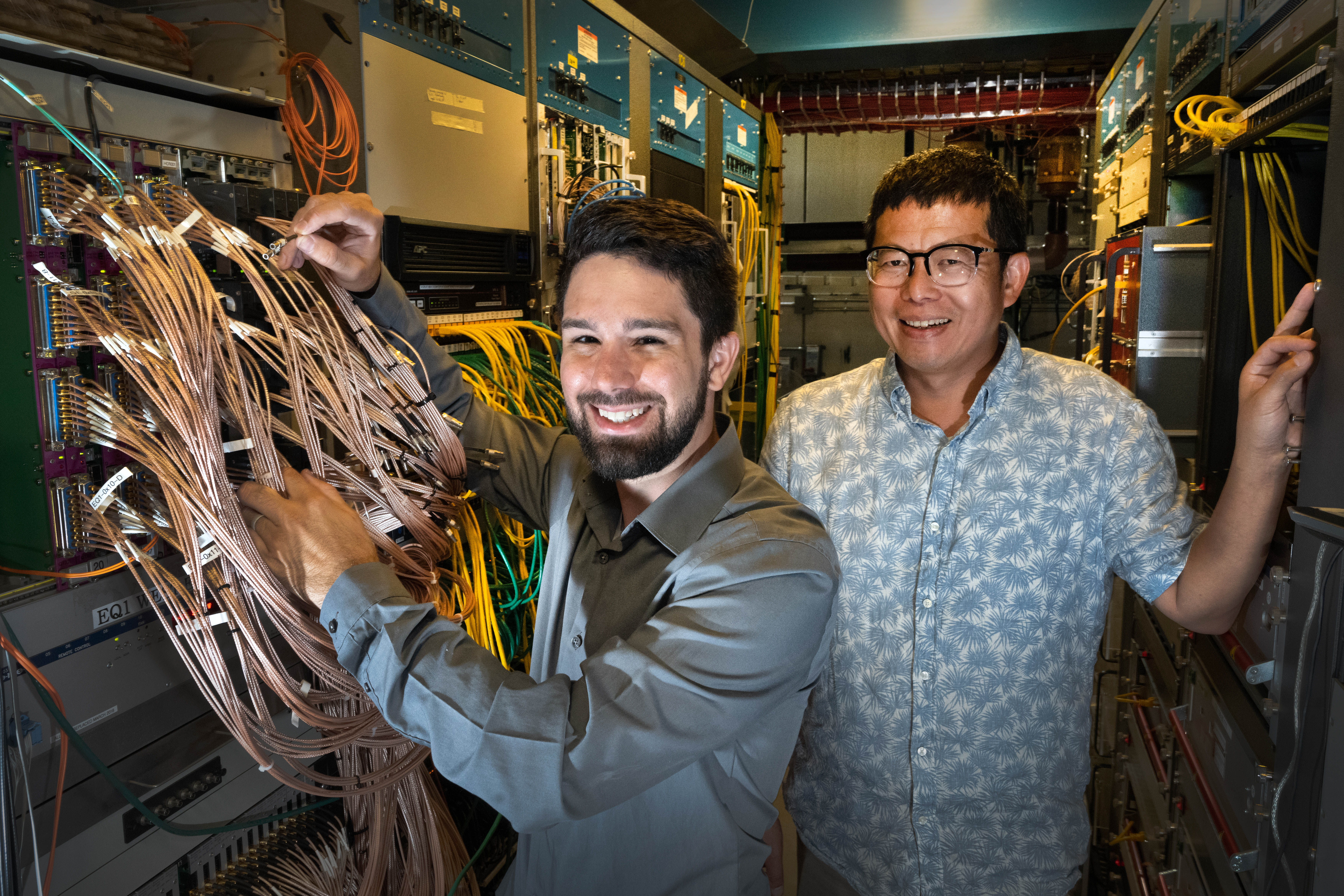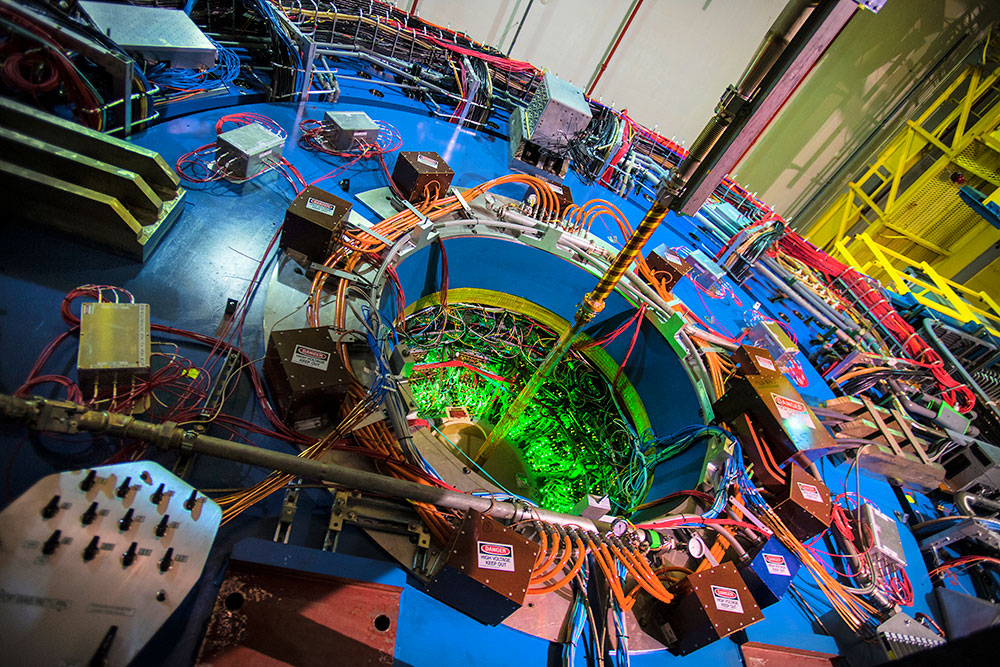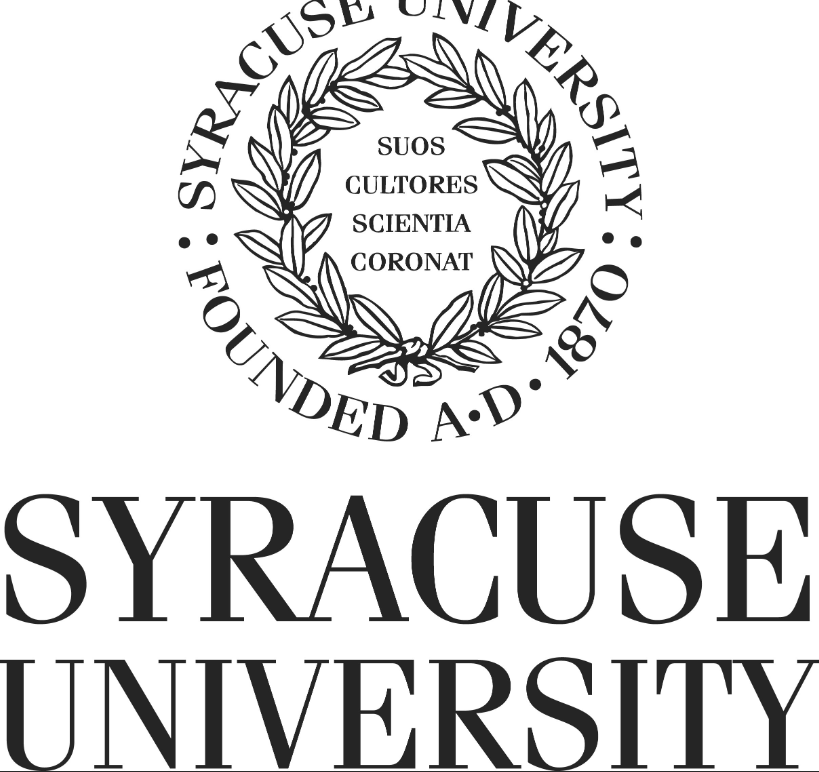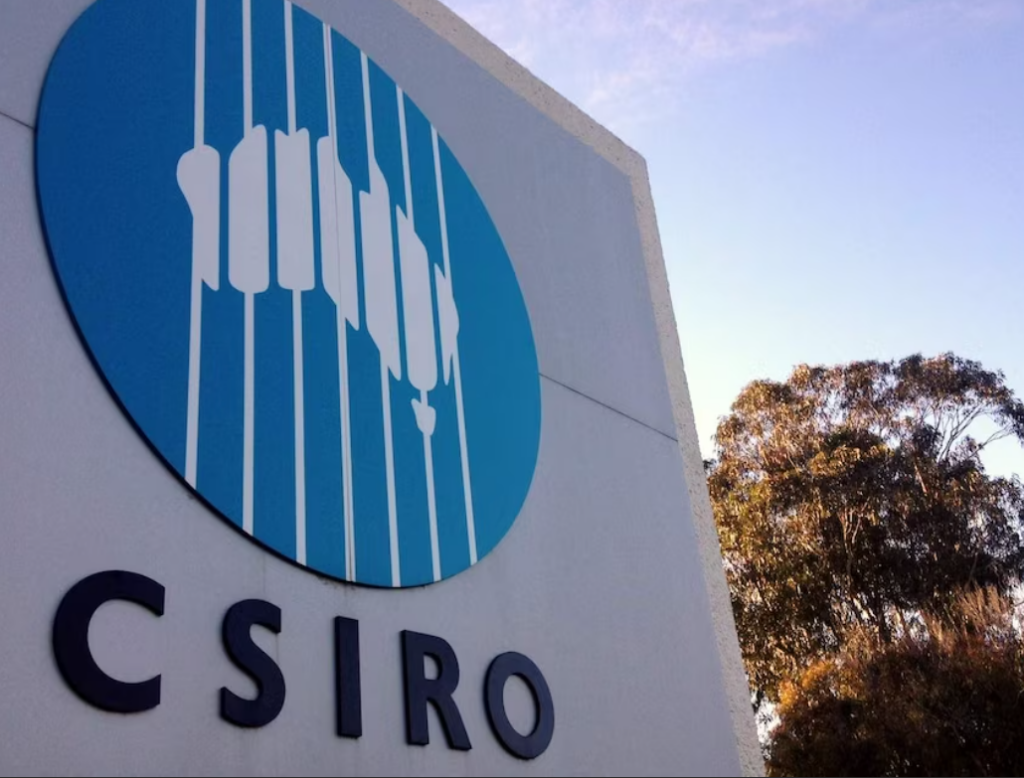Insider Brief
- Nuclear physicists at Brookhaven National Laboratory have found a new way to use a particle collider to probe atomic nuclei.
- The method also revealed a new type of quantum entanglement.
- The researchers believe that the discovery could lead to real-world applications, including better control of entanglement, which is central to efforts in the quantum technology field.
- Image: The house-size STAR detector at the Relativistic Heavy Ion Collider (RHIC) acts like a giant 3D digital camera to track particles emerging from particle collisions at the center of the detector. Brookhaven National Lab
RESEARCH NEWS RELEASE — Nuclear physicists have found a new way to use the Relativistic Heavy Ion Collider (RHIC)—a particle collider at the U.S. Department of Energy’s (DOE) Brookhaven National Laboratory—to see the shape and details inside atomic nuclei. The method relies on particles of light that surround gold ions as they speed around the collider and a new type of quantum entanglement that’s never been seen before.
Through a series of quantum fluctuations, the particles of light (a.k.a. photons) interact with gluons—gluelike particles that hold quarks together within the protons and neutrons of nuclei. Those interactions produce an intermediate particle that quickly decays into two differently charged “pions” (π). By measuring the velocity and angles at which these π+ and π– particles strike RHIC’s STAR detector, the scientists can backtrack to get crucial information about the photon—and use that to map out the arrangement of gluons within the nucleus with higher precision than ever before.
“This technique is similar to the way doctors use positron emission tomography (PET scans) to see what’s happening inside the brain and other body parts,” said former Brookhaven Lab physicist James Daniel Brandenburg, a member of the STAR collaboration who joined The Ohio State University as an assistant professor in January 2023. “But in this case, we’re talking about mapping out features on the scale of femtometers—quadrillionths of a meter—the size of an individual proton.”

Even more amazing, the STAR physicists say, is the observation of an entirely new kind of quantum interference that makes their measurements possible.

“We measure two outgoing particles and clearly their charges are different—they are different particles—but we see interference patterns that indicate these particles are entangled, or in sync with one another, even though they are distinguishable particles,” said Brookhaven physicist and STAR collaborator Zhangbu Xu.
That discovery may have applications well beyond the lofty goal of mapping out the building blocks of matter.
For example, many scientists, including those awarded the 2022 Nobel Prize in Physics, are seeking to harness entanglement—a kind of “awareness” and interaction of physically separated particles. One goal is to create significantly more powerful communication tools and computers than exist today. But most other observations of entanglement to date, including a recent demonstration of interference of lasers with different wavelengths, have been between photons or identical electrons.
“This is the first-ever experimental observation of entanglement between dissimilar particles,” Brandenburg said.
The work is described in a paper just published in Science Advances.
Source: Brookhaven National Laboratory
If you found this article to be informative, you can explore more current quantum news here, exclusives, interviews, and podcasts.



















